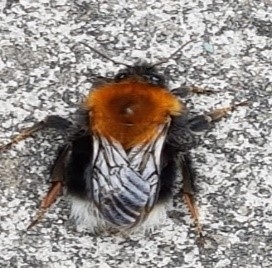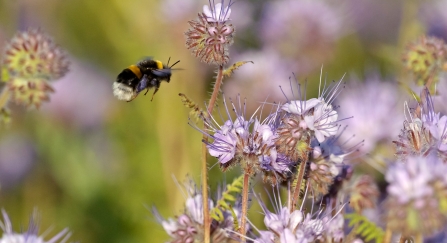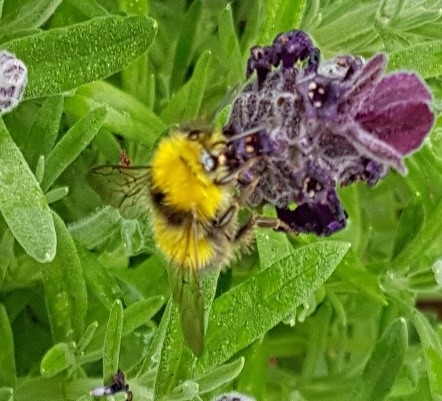I first noticed the tree bumblebee nest when I saw four to six bees hovering outside its entrance, a behaviour known as ‘nest surveillance’. In the recent sunny weather this behaviour went on all day, only stopping during a cold snap or rain.
Nest surveillance is carried out by hopeful male bees waiting for their chance to mate with new, virgin queens appearing outside the nest. Sometimes they will go to the ground in the process of mating, and in the photo below a new queen was alone on the patio.




